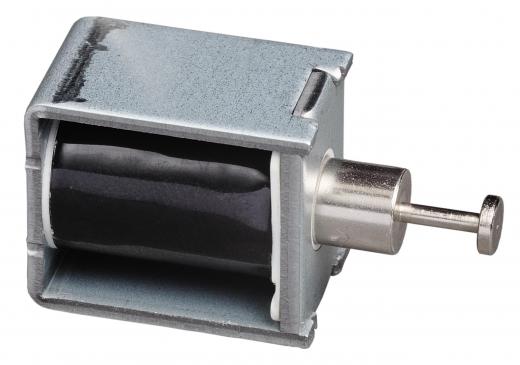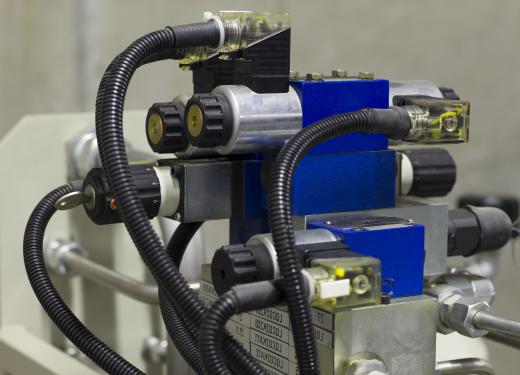A solenoid plunger is the moving part of a solenoid that transfers linear motion from the solenoid to the component that it is designed to operate. The plunger is typically a ferrous metal bar of square or round cross-section designed to fit into the solenoid coil pocket. The electromagnetic field created in the solenoid coil pocket when the device is activated pulls the plunger into the pocket, thereby supplying the aforementioned linear motion. The solenoid plunger is generally spring-loaded, which serves to return it to its neutral position when the power to the solenoid is cut. Solenoid plungers may be of a solid construction or be laminated from several thinner layers of steel depending on the particular device's specifications.
Solenoids are among the most commonly used methods of supplying remote or automated control in a wide variety of applications. These devices use electromagnetic forces to transfer linear motion via linkages to control a range of equipment including valves, ventilation shutters, and machinery components. They typically consist of a static wire coil with a pocket or open core at their center. The solenoid plunger is the moving component of the solenoid and is generally in the form of a square or round rod or bar made from various ferrous alloys.

When in the neutral or inactive position, the plunger is typically located with its one end near to or just inside the opening of the coil pocket. When an electric current is passed through the coil, an electromagnetic field is created that attracts the solenoid plunger, pulling it sharply into the coil pocket. The plunger is, in turn, connected via various types of linkages to the item or equipment that the solenoid controls. The motion of the plunger thus supplies the linear movement required by the control process.

The solenoid plunger usually works against the pressure of a strong spring when it is activated. The magnetic field is strong enough to overcome the spring tension while the solenoid is activated, but, when the power is cut, the spring pulls or pushes the plunger back to its neutral position. This effectively resets the process and readies the solenoid for another duty cycle. Solenoid plungers may be solid round or square bars or made up of many thin plates stacked together and secured with pins or rivets. This measure is usually a method of counteracting eddy currents in the coil and plunger, making the solenoid operate more efficiently and at a lower temperature.
